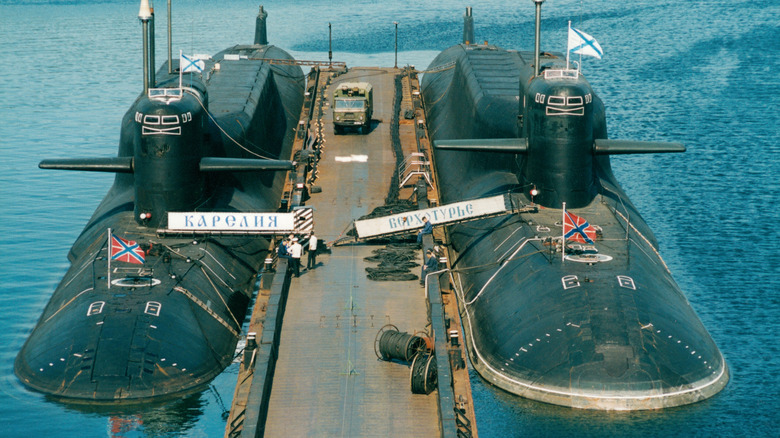This Keeps Deep-Diving Titanium Nuclear Submarines Unique To Russia
During the height of the Cold War, the rivalry between the United States and the Soviet Union spurred several technology-oriented races where both countries were trying to outdo the competition. The space race, nuclear power — which can be explored in the Turning Point: The Bomb and The Cold War docuseries on Netflix – and military equipment. One such design, belonging to the Soviet Navy, was a series of iconic submarine classes made out of titanium, called the Sierra-class and Alfa-class submarines. As a material, titanium was desirable because it offered better performance for undersurface vessels, an excellent strength-to-weight ratio, resistance to seawater corrosion, and non-magnetic properties. That allowed the titanium-made subs to go deeper and stay stealthy to most modern forms of detection. Sounds like a real winner. Of course, use the wrong materials or design, and a submarine implodes – showing how deep-sea pressure can be a real difficult element for underwater vessels. The recent Netflix documentary on the Titan submarine captures the effects of deep-sea pressure well.
Ultimately, there were a lot of factors that made the titanium hull submarines a nightmare, contributing to the United States' economic move to pass on the concept. What was the problem, exactly? Well, titanium and its metallurgical properties. High-grade titanium is notoriously difficult to craft with and manage. It requires clean, oxygen-free environments, specialized tools and equipment, and skilled personnel. Procurement of the material itself was also challenging due to supply chain constraints. Most importantly, because of the requirements, it was virtually impossible to do proper field repairs on a titanium hull without a set of unique tools on hand. That meant battle damage was a huge problem. That's a glaring oversight for vessels designed for wartime use. But the Soviet Union made it work.
Moscow's 'yes' versus the United States' resounding 'no'
Why would Moscow and the Soviet Union decision-makers say "yes" to titanium, when the United States didn't? Soviet vessels were known for being stealthy and fast, at least in theory, because they used high-power reactors, a different technology than most U.S. comparatives. They could move faster, dive deeper, and out-climb the competition, and the titanium hull designs were meant to do more of the same. Not to mention, the political and administrative climate in the Soviet Union lent itself well to specialized welding opportunities like exotic welding halls or titanium-only mills. They weren't private businesses funding or spearheading development, instead it was led by state-funded operations. Finally, the non-magnetic properties, especially with the Soviet Union close to the Arctic, meant detection was more difficult for NATO and its allies. If they played their cards right, Soviet titanium subs could slip near-undetected into enemy waters.
The reality is a lot of pain points related to titanium as a material, and the costs, could be absorbed by the Soviet Union, allowing them to pursue the tech. It was simply too costly for the U.S., and high-grade steel worked out best across the world. Although titanium didn't offer the quieting that the Soviet Union had hoped. While the material is durable, lightweight, and quiet, the machinery inside the submarine is what makes the most noise. In addition, the United States' plan to keep costs down helped when it came to maintaining undersea prowess long-term like repairing battle damage in the field, advancing technologies like sonars and combat systems, and keeping the fleet numerous and in commission longer.

